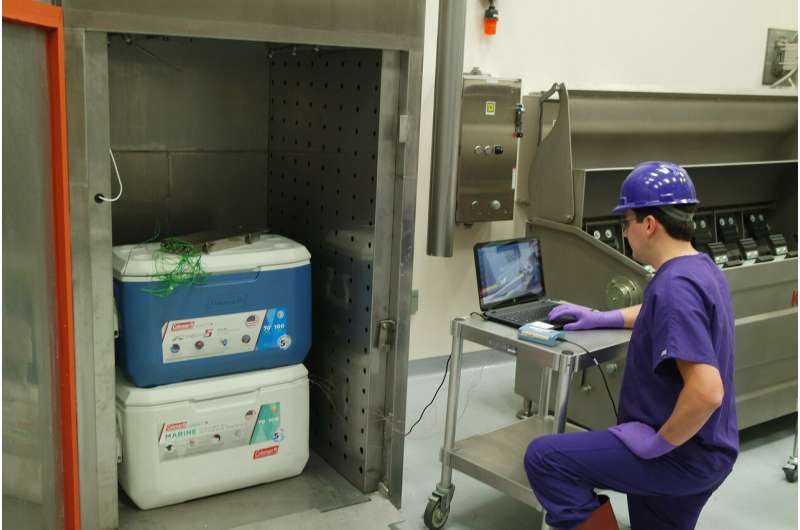Researchers study how to keep school lunches safe on field trips

The school field trip is a springtime ritual: Buses practically burst with exuberant children who are happy to learn outside classroom walls. But packed lunches coupled with warm temperatures could allow dangerous bacteria to flourish and sicken the travelers.
Researchers with the Kansas State University Center for Food Safety in Child Nutrition Programs in the College of Human Ecology and the Food Science Institute in the animal sciences and industry department have published a study confirming that limiting the time lunches are stored in coolers to less than four hours may reduce the risk of salmonella and listeria monocytogenes growth in a typical school lunch of deli sandwiches, apple slices and baby carrots. The article is featured in the January/February issue of Food Protection Trends, a publication of the International Association for Food Protection.
Randy Phebus, professor of animal sciences and industry and interim director of the Food Science Institute, said food safety is often at the back of everyone's mind when field trip excitement hits.
"Spring or summertime heat can cause a school bus waiting in a hot parking lot to reach temperatures that could compromise food stored for a later lunch," Phebus said. "We wanted to know what level of risk this scenario actually poses to schoolchildren."
To conduct the experiment, Phebus and co-investigator Sara Gragg, assistant professor of animal sciences and industry, packed sack lunches in coolers with either no ice or one layer of ice on the bottom and exposed them to simulated temperatures on school buses using ovens in the Biosecurity Research Institute food processing suite at Kansas State University. They inoculated lunches with bacteria and tested for growth during particular time frames and from different areas of the cooler—and thus different distances from the ice. The simulated conditions and products types were selected based on a 2015 study conducted by the Center for Food Safety in Child Nutrition Programs and published in the Journal of Child Nutrition & Management.
"The study was designed to simulate a high-risk scenario regarding temperature abuse of the food products, so the fact that bacterial growth was not observed suggests time can be effectively used as a public health control on school field trips," Gragg said.
The researchers emphasize that controlling time and temperature is critical to protecting food against foodborne pathogen growth during storage.
"This study suggests that foodborne illness risk is low when school lunches are held under temperature abuse conditions on a bus for up to four hours," Gragg said. "However, it's important to remember that we only investigated three food products and two foodborne pathogens, so our results are somewhat limited."
The researchers recommend that anyone packing coolers for field trips use plenty of ice to keep food cold, which is the ultimate defense against temperature increases that support bacteria growth. Cooler storage on school buses with elevated temperatures should also be avoided whenever possible. More studies are planned to test additional food products and foodborne pathogens using the same simulated high-risk scenario.
More information: Sara E. Gragg et al. Simulation of Time and Temperature as a Public Health Control for Food Served during Field Trips. Food Protection Trends, vol. 39, no. 1, pp. 8-17, Jan 2019 Volume 39, Issue 1
Provided by Kansas State University





















